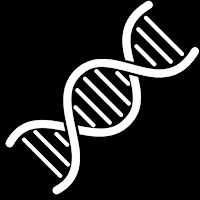Muscle fibers have been of interest for a long time, Zhang said. Researchers have been trying to design materials with similar properties to muscles for various applications, such as in soft robotics and sustainable clothing. "We wondered, 'Why don't we just directly make synthetic muscles?'" he said. "But we're not going to harvest them from animals, we'll use microbes to do it."
The synthetic muscle protein produced in Zhang's lab is titin, one of the three major protein components of muscle tissue. Critical to its mechanical properties is the large molecular size of titin. "It's the largest known protein in nature," said Cameron Sargent, a PhD student in the Division of Biological and Biomedical Sciences and a first author on the paper along with Christopher Bowen, a recent PhD graduate of the Department of Energy, Environmental & Chemical Engineering.
To circumvent some of the issues that typically prevent bacteria from producing large proteins, the research team engineered bacteria to piece together smaller segments of the protein into ultra-high molecular weight polymers around two megadaltons in size -- about 50 times the size of an average bacterial protein. They then used a wet-spinning process to convert the proteins into fibers that were around ten microns in diameter, or a tenth the thickness of human hair.
Working with collaborators Young Shin Jun, professor in the Department of Energy, Environmental & Chemical Engineering, and Sinan Keten, professor in the Department of Mechanical Engineering at Northwestern University, the group then analyzed the structure of these fibers to identify the molecular mechanisms that enable their unique combination of exceptional toughness, strength, and damping capacity, or the ability to dissipate mechanical energy as heat.
Application of Synthetic Muscle:
Its production can be cheap and scalable. It may enable many applications that people had previously thought about, but with natural muscle fibers," said Fuzhong Zhang, professor in the Department of Energy, Environmental & Chemical Engineering. Now, these applications may come to fruition without the need for actual animal tissues.
Aside from fancy clothes or protective armor (again, the fibers are tougher than the material used in bulletproof vests), Sargent pointed out that this material has many potential biomedical applications as well. Because it's nearly identical to the proteins found in muscle tissue, this synthetic material is presumably biocompatible and could therefore be a great material for sutures, tissue engineering, and so on.
"The beauty of the system is that it's really a platform that can be applied anywhere," Sargent said. "We can take proteins from different natural contexts, then put them into this platform for polymerization and create larger, longer proteins for various material applications with a greater sustainability."
References:
- Materials provided by Washington University in St. Louis.
- Christopher H. Bowen, Cameron J. Sargent, Ao Wang, Yaguang Zhu, Xinyuan Chang, Jingyao Li, Xinyue Mu, Jonathan M. Galazka, Young-Shin Jun, Sinan Keten, Fuzhong Zhang. Microbial production of megadalton titin yields fibers with advantageous mechanical properties. Nature Communications, 2021; 12 (1) DOI: 10.1038/s41467-021-25360-6




